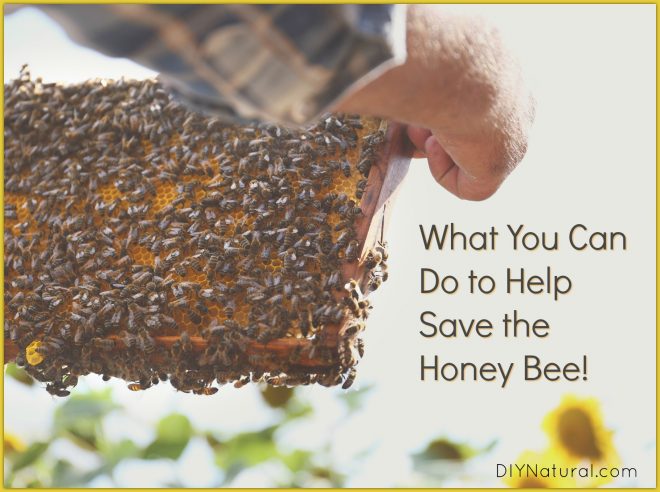

Are you noticing less bees in your yard? Worried about the current state of the honey bee?
I get questions all the time from people who want to know what they can do to help save bees. They don’t want to keep bees, but they need practical ideas for how the average person can help.
Here is a to-do list for every person who cares, but is limited with time and space:
Save Bees: How to Help the Honey Bee
The Don’t List:
1. Don’t spray herbicides, fungicides, or pesticides on your lawn or flower beds. Most people think that if they avoid bug killer, the bees aren’t hurt. That isn’t the case. In fact, all of these chemicals get carried back to the hive, both on little feet and in the pollen and nectar they gather. The buildup of these things doesn’t happen immediately, but over time the accumulation in their comb can be disastrous.
2. Don’t buy plants that have been sprayed with herbicides, fungicides, or pesticides from your local garden center to plant in your yard.
READ RELATED: 25 Uses For Old Sheets, Towels, and Other Linens
3. Don’t buy products that contain bee-made products that can’t be taken from the bees without negative consequences:
- Royal Jelly – Yes, this is amazing stuff, but there is no way to get it without killing a lot of bees. Here’s how it’s done:
- A bee colony must have a queen to be calm and healthy. The queen is removed, which makes the colony anxious to hatch out a new one. A frame of plastic queen cells is put into the hive. The workers begin to make royal jelly to feed these new queens. After a few days this frame is removed, the queens are frozen and the royal jelly removed. Then the frames are placed back into the hive to start all over again.
- Propolis – Only buy this one from a beekeeper who has a limited supply. Farming this bee product is equivalent to removing your immune system and selling it off for others to use. A small amount is available to the beekeeper every year at honey harvest without messing with the bees much. If their business is based in propolis and they seem to have a supply all the time, they aren’t taking it sustainably.
The Do List:
1. Do plant a variety of bee plants. Be sure to choose groups of plants that can provide pollen and nectar from very early in the spring until late in the fall. Avoid choosing just one type of flower that may only provide food once. Variety is the key! (See a list of plants that can be used to attract bees and other pollinators.)
2. Do provide water for the honeybee in your garden design. This is a great project to include young ones in.
Homemade Bee Fountain
You’ll need some sort of vessel – this can be anything from a chipped tea cup to an old birdbath. We chose the bottom of a flower pot. Fill this with any kind of stone you’d like. Bees can’t swim, so these stones need to stick up above the water, giving them a place to stand safely while they drink. You’ll find that this watering station needs to be filled often and that you’ll attract butterflies and small birds along with your honey bee friends.
In Closing…
While everyone is clamoring to become a beekeeper in the face of declining bee health, that isn’t always the answer. You can help in the simplest of ways with just a few additions to your flower bed or voting with your dollar at the grocery and hardware stores.
Want more information about how to help the honey bee? Check out these other articles:
*******
Source: DIY Natural





